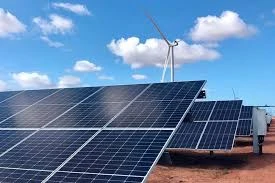Exploring Dimensions of Solar Panels Width and Length for Optimal Energy Efficiency
Understanding Solar Panel Dimensions Width and Length
As the world increasingly turns towards renewable energy sources, solar panels have become a crucial element in the quest for sustainability. Their efficient conversion of sunlight into electricity offers a viable alternative to fossil fuels. However, when considering the installation of solar panels, it is essential to understand their dimensions, particularly width and length, as these measurements can significantly impact energy production, installation feasibility, and aesthetic considerations.
The Standard Dimensions of Solar Panels
Most solar panels on the market today follow standard dimensions, typically measuring about 65 inches in length and 39 inches in width for residential models. This standard size is commonly referred to as a 60-cell panel, indicating that it contains 60 photovoltaic (PV) cells. For larger installations, such as commercial or industrial applications, 72-cell panels are often used, which generally measure approximately 77 inches long by 39 inches wide.
These measurements are not arbitrary; they result from a careful balance between efficiency, cost, and the physics of solar energy capture. Each cell's dimensions ensure optimal light absorption and minimize the impact of shading, which can significantly affect overall performance.
Factors Influencing Solar Panel Width and Length
Several factors influence the width and length of solar panels, including technology, type of application, efficiency, and the manufacturer’s design philosophy. For instance, advanced technologies like bifacial panels, which capture sunlight on both sides, may have different dimensions when compared to traditional monofacial panels.
Additionally, the intended application plays a crucial role. If solar panels are to be installed on rooftops, their dimensions must align with the available space while maximizing energy output. Meanwhile, ground-mounted systems may provide more flexibility regarding size, allowing for larger panels that can enhance energy production.
solar panel width and length

Impact on Installation and Aesthetics
The dimensions of solar panels significantly affect installation logistics. Homeowners must consider the roof's pitch, orientation, and available space before committing to a specific panel size. Larger panels may reduce the number of individual units needed, but they can also present challenges in terms of weight and structural load.
Aesthetic considerations are also paramount. For residential installations, homeowners often seek panels that blend seamlessly with their roofs. The width and length of the selected panels can influence the overall appearance of the installation. Smaller panels can create a more uniform look on uneven surfaces, while larger panels may dominate the visual landscape, which could be either appealing or cumbersome to the homeowner.
Efficiency and Energy Production
Ultimately, the width and length of solar panels relate directly to their energy production capabilities. A larger surface area typically translates to greater energy capture, thereby enhancing the panel's overall efficiency. However, efficiency metrics also depend on the quality of the PV cells and the technology employed. Therefore, while size matters, the solar panel's type and the technology behind it are equally important for maximizing energy yield.
Conclusion
In summary, understanding the width and length of solar panels is vital for anyone considering investing in solar energy. These dimensions affect everything from efficiency and installation practicality to aesthetic appeal. With the increasing variety of solar panel sizes and types available today, careful evaluation of these factors will lead to better-informed decisions, ensuring that solar solutions fulfill both energy and aesthetic preferences while contributing positively to environmental sustainability.
-
String Solar Inverter: The High-Efficiency Solution for Smart Solar EnergyNewsJul.14,2025
-
Revolutionizing Rooftop Energy with the Power of the Micro Solar InverterNewsJul.14,2025
-
Power Independence with Smart Off Grid Solar Inverter SolutionsNewsJul.14,2025
-
On Grid Solar Inverter: Powering the Future with Smart Grid IntegrationNewsJul.14,2025
-
Monocrystalline Solar Panels: High-Efficiency Power for the Future of Clean EnergyNewsJul.14,2025
-
Bifacial Solar Panel: A Smarter Investment for Next-Generation Energy SystemsNewsJul.14,2025







